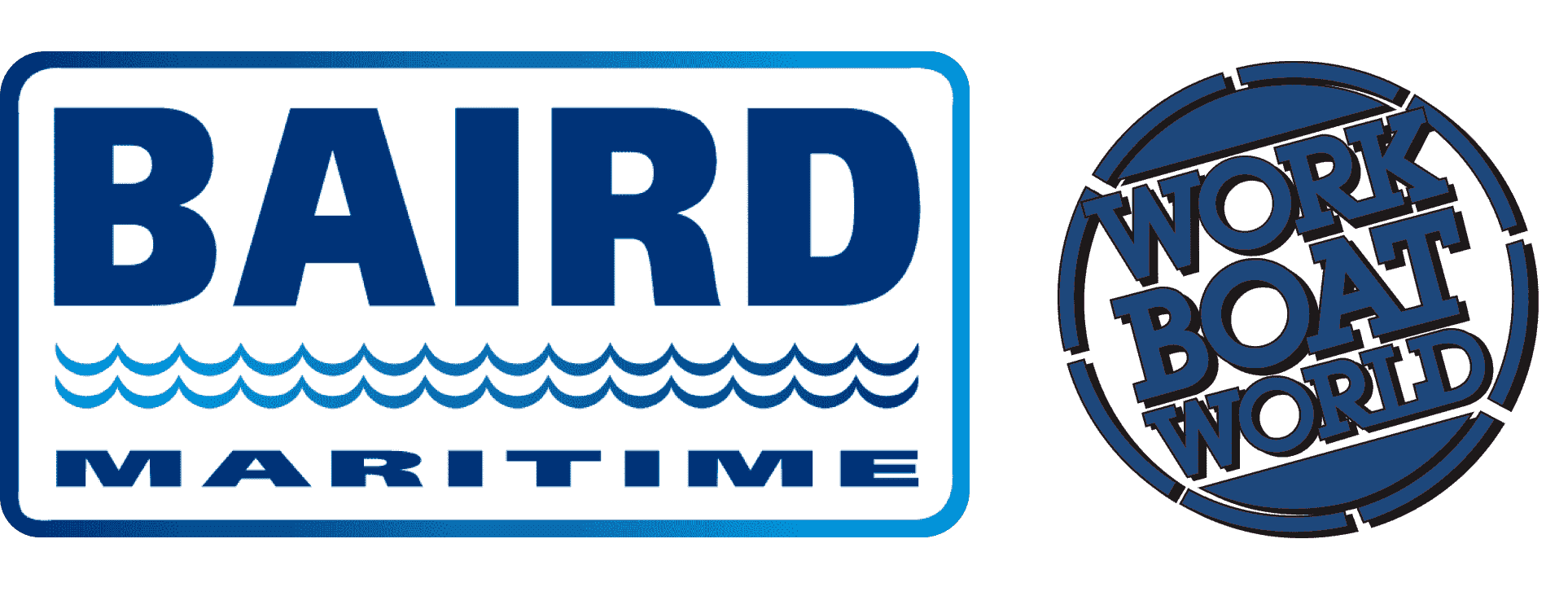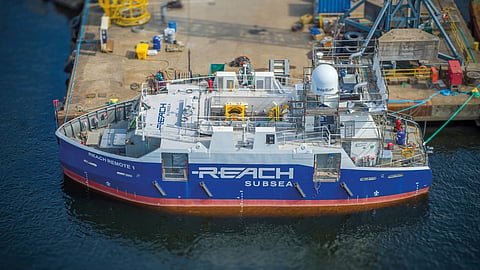VESSEL REVIEW | Reach Remote 1 – Unmanned mothership to expand Norwegian operator’s ROV capabilities
Norwegian offshore services provider Reach Subsea has taken delivery of the first example in a new series of unmanned surface vehicles (USVs) being built for the company as motherships for smaller remotely operated craft.
Design and development of the USV Reach Remote 1 was undertaken by Norwegian technology firm Kongsberg Maritime. Massterly, a joint venture between Kongsberg and shipping company Wilhelmsen, will be responsible for controlling and monitoring the craft from a remote operations centre via VSAT, 5G, and other wireless connections, and near real-time data acquisition results will be provided continuously for quality control and made available for employers in a visualised solution.
Kystdesign meanwhile provided a smaller work-class remotely operated vehicle (ROV) powered by electricity and with a rated operating depth of 2,000 metres (6,600 feet).
Single platform serving multiple roles
The USV was developed as part of the Reach Remote project, which is being carried out by Reach Subsea in cooperation with Kongsberg Maritime and Massterly, and is also supported by a grant from Innovation Norway. The introduction of the new craft is part of the first stage of the project, which seeks to make USVs available for survey, inspection, maintenance and repair (IMR), and light intervention projects.
These USVs will serve as mobile power banks, data centres, and communication modules for underwater ROVs, with both the USVs and ROVs operated from an onshore control centre.
Reach Remote 1 has a length of 23.9 metres (78.4 feet), a beam of eight metres (26 feet), a maximum draught of 5.5 metres (18 feet), and a gross tonnage of 230. In addition to the ROV, key features include hull-mounted survey sensors and a moonpool.
Two Volvo Penta D13-600 MH 441kW (592hp) engines will propel Reach Remote 1 to speeds of up 11 knots, whereas sailing at an average service speed of nine knots will allow the USV to stay out at sea for a maximum of 30 days. This makes the craft an ideal platform for survey and monitoring missions of extended duration. Dynamic positioning is effective even in conditions characterised by significant wave heights of 3.5 metres (11 feet) and wind speeds of 20 metres per second (66 feet per second).
Features for both real-time operator control and autonomous operations will be incorporated, as well as hybrid modes blending remote and semi-autonomous control.
Reach Remote 1 will be able to perform all kinds of traditional survey tasks like seabed mapping, pipeline inspection, geophysical surveys, and unexploded ordnance (UXO) surveys. The USV will also boast a number of advantages over traditional vessels and survey spreads. There will be a number of automated functions such as mission planning and execution, automatic feature recognition, onboard processing, and data storage.
The hull-mounted sensors will be supplied by Kongsberg Maritime. These include a high-precision acoustic positioning system, a multibeam echosounder, and a sub-bottom profiler. The ROV, which will be the main IMR and intervention platform, will also be fitted with its own sensors including an obstacle avoidance sonar, an INS, an echosounder, a video camera, and a magnetometer.
Other onboard electronics fitted in the USV include a PTZ camera, a radar, AIS, GPS, and a gyrocompass. A robotic arm will enable simple underwater tasks such as adjusting valves or moving debris. These systems and all the other onboard electronics are powered by an uninterruptible power supply (UPS) system from Anda-Olsen.
First in a new USV fleet
The long-term goal of the Reach Remote project is to provide a full portfolio of subsea services from a low-emission, cost-effective remote and autonomous fleet beginning in 2025.
The project partners claim that the project’s key benefits, compared to equivalent solutions using a full-scale subsea vessel, are more than 90 per cent fewer CO2 and NOx emissions; virtual elimination of the personnel risk associated with offshore operations; and significant reductions in the cost of subsea survey and inspection services.
Reach Remote 1 will initially be deployed in support of Norwegian state-owned energy company Equinor.
The deployment, scheduled to commence in the autumn of 2024, will also serve as an operational demonstration period during which the USV’s survey, intervention, IMR, and monitoring capabilities will be thoroughly tested and evaluated in the North Sea and the Norwegian Sea on production fields such as Troll, Gullfaks, Snorre, and Åsgard.


